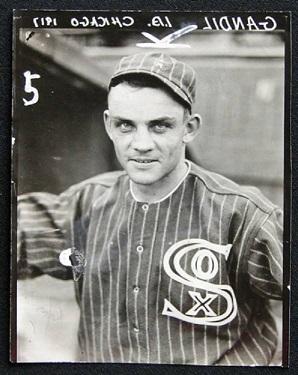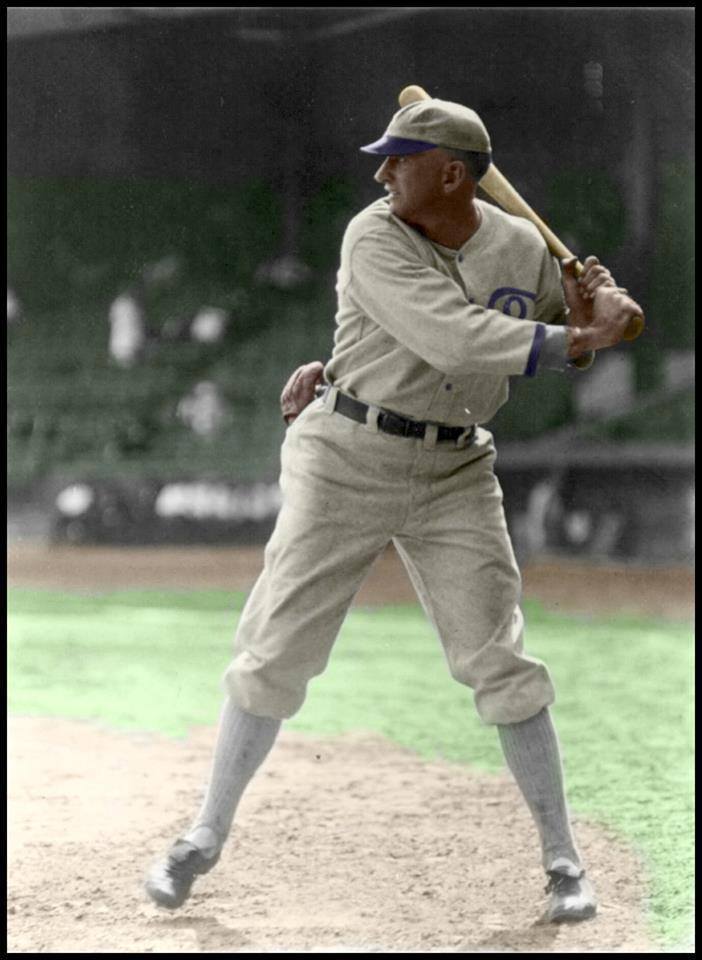Baseball History Comes Alive Now Ranked #2 by Feedspot Among All Internet Baseball History Websites and Blogs!
Guest Submissions from Our Readers Always Welcome!
THE BASEBALL HISTORY COMES ALIVE BLOG
Please note: As we compose new blog entries, we will now send each one out to all our subscribers as we post them. Here’s a link to see the entire Blog Archives -GL
August 17, 2022
New Blog Topic:
Let’s Take A “Deep Dive” Into the Black Sox Scandal
After last week’s “Field of Dreams” game, I started thinking again about the Black Sox scandal. And so I reposted my essay, “The Eyewitness Accounts,” taken from my book, Reflections on the Black Sox Scandal, Time to Take Another Look.
I’ve decided that for the next few Wednesdays I’ll be taking a “deep dive” into the scandal that rocked the baseball world to its very foundation. I’ll be posting a different essay each week from my book. The theme of the book, as I’ve stated repeatedly, is that I don’t know what really happened, but I’m convinced the conventional wisdom is not telling us the complete story of this sordid event.
In today’s essay, slightly edited and updated, we’ll take a look at the “Seven Suspicious Plays.” Certainly feel free to agree or disagree with anything I say.
Another Look at the Black Sox Scandal: Sportswriter Hugh Fullerton’s “Seven Suspicious Plays”
I honestly don’t know what really happened in that infamous Series – which we all can agree was baseball’s darkest hour. I just have a hunch that the conventional wisdom doesn’t quite tell us the entire story…not by a long shot. One hundred years later, my only purpose is to take a fresh look at the known facts and try to assess the situation objectively and unemotionally.

One aspect of the scandal that I’ve always found rather odd is the “Seven Suspicious Plays” compiled by sportswriter Hugh Fullerton. Today we’ll examine the plays and see what we find.
Hugh Fullerton’s Role
Hugh Fullerton did more than anyone to break the story through his column in the Chicago Herald and Examiner, including enduring death threats.
Rumors of a “fix” filled the air as the opening game of the World Series approached. So Fullerton, like many others in the press box, was observing the action with a sharp, skeptical eye. With that as his mindset, it was easy to spot what appeared to be “suspicious play,” even if it was possibly just “poor play” by pre-occupied players saddled with extreme mental baggage.
But even then, isn’t it odd that Fullerton, sitting alongside Christy Mathewson, came up with only seven for the entire eight-game series?
The Seven Suspicious Plays
The most controversial of Fullerton’s “seven suspicious plays” occurred in the fourth inning of Game Four, when Eddie Cicotte errantly deflected a strong throw to the plate by Joe Jackson, allowing an important run to score. It soon became conventional wisdom that Eddie did it deliberately. Those looking for evidence of “crooked play” always cite this as “Exhibit A.”
But Chick Gandil claimed that he was yelling at Eddie to cut off the throw, viewing it as the proper play. And here’s the real kicker: “Clean Sox” Eddie Collins, the future Hall-of-Famer, saw it first-hand from his position at second base. He later vindicated Cicotte, saying the attempted cut-off was indeed the correct play. A few batters earlier, Eddie had himself made a great play on a ball hit up the middle by Morrie Rauth. Even catcher Ray Schalk said, “Eddie gave his best all the way.”
Another of Fullerton’s disputed plays involved Shano Collins, who was never accused of anything. One involved Risberg backing up on an infield single; another had Williams going into a streak of wildness in the fourth inning of Game Two; two others were mound misplays by Cicotte, who was not known to be a good fielder. His .942 fielding average is the thirty-sixth worst all-time.
Only Seven Suspicious plays in an Eight-Game Series?
And that’s it. What World Series has never had a few miscues, errors, or streaks of wildness? None of these seven plays directly involved Chick Gandil, the so-called ring leader, or even Happy Felsch. Most objective historians clear Jackson and Weaver of crooked play. McMullin had only two at-bats, going one-for-two, and never touched the ball. And so I have to ask:
So just who was doing all the “fixing”? And when did they do it?
If you read my previous post, you’ll remember that other eye-witnesses, including the sportswriters in attendance, the official scorer, and even the umpires on the field, thought the series was played “on the level.” These were all baseball lifers, not casual fans.
I’ve always found the observations by Umpire Ernie Quigley to be extremely interesting: “…I never saw a team try harder to win and they were beaten on the square by the superior strength of the Reds.” Quigley also mentioned two great plays by Edd Roush and Morrie Rath:
“But for these two plays, the White Sox would have won at least two more games, which would have meant the series for them.”
Hmmm…Shouldn’t that last statement alone start us thinking? How does the “conventional wisdom” account for that?
Are we to believe that these seven plays alone resulted in a “thrown” eight-game World Series? I guess it’s possible that the “Eight Men Out” were such good actors that they could somehow pull it off; and baseball lifers, watching closely for crooked play, wouldn’t even notice. But in the confused, emotionally-volatile mental state they were in, somehow I tend to doubt it.
My Conclusion
Here’s a reprint of the conclusion from my previous post:
The entire sordid episode was a blurred, surreal sequence of events where no one really knew what anyone else was doing. A few may have cracked under the intense mental strain and anguish, as Gandil implied in his 1956 interview for Sports Illustrated. Conflicting stories and emotions were rampant:
Who’s in? Who’s out? Who’s trying? Who isn’t? Is it worth the risk? Is it too late to call it off? We took money, now what? Is it too late to give it back? We made a “devil’s bargain” with the gamblers. What happens when you double-cross gamblers??
All this and much, much more had to be tormenting them as the Opening Game of the 1919 World Series approached. Who could possibly concentrate on winning baseball? On a national stage, no less. And against a strong team like the Reds.
The situation was ripe for an upset…
The Black Sox were an extraordinary mix of arrogance, stupidity, naivety, greed, and, yes, talent. Conspiring with gamblers to throw the World Series was a serious offense. They got what they deserved and they knew it. The acceptance of dirty money irreversibly tarnished their reputations and made their future protestations of innocence ring hollow:
“Sure, we took their money all right, but we double-crossed them by trying to win!
Yeah, right…who did they think was going to believe that? It’s a hundred years later, and still nobody believes them. As with a tar baby, once they touched the gamblers, they could never break free. Their fate was sealed. But the question now before us is: What really happened? It’s time to reexamine the events of the 1919 World Series with “pursuit of the truth” as the only goal. Let the chips fall where they may.
(Coming up, I’ll examine Shoeless Joe Jackson’s role in a three-part series of articles).
Gary Livacari
Here’s a link to see the entire Blog Archives


Being the Palehose junkie that I am, I read your article with much interest, and am looking forward to your future posts on the subject. My feeling is that the convicted eight realized, too late; that they had gotten themselves into a predicament that could not be reversed. Arnold Rothstein was firmly entrenched in the mob, and would have had no qualms about ordering deadly consequences to be dealt; had any of them attempted to back out of the fix. Case in point…legend has it that serious threats were made to Lefty Williams regarding the welfare of his wife had he not followed through with his role in the “deal”. Indeed, as you say, it is a dark stain on the game that hasn’t diminished in over 100 years. Excellent work, Gary. Thnx.
Thanks Tom. I think this statement of your sums up my feelings nicely:
“My feeling is that the convicted eight realized, too late, that they had gotten themselves into a predicament that could not be reversed.”
If you read my conclusions, you’ll see I’ve repeatedly said the same thing many times in many different ways. Once they touched the gamblers, e.g., dirty money was given and accepted, they were screwed and they knew it. As with a tar baby, they could never totally break free. It made all their future protestations of innocence ring hollow. But as Game One drew near, they, as you say, “realized, too late, that they had gotten themselves into a predicament that could not be reversed.” What they did from that point on is what we’re trying to uncover, and I don’t think it’s as simple as the conventional wisdom would have us believe.
I just wanted to let you know that I’ve been enjoying all of these articles about the 1919 world series. I was linked here from an article on cracked.com, but haven’t been able to stop at just reading one or two. I am not a die hard baseball fan or a history buff, but I’ve found your writing informative, interesting, and easy to follow. I wanted to thank you for compiling all the information with quotes and citations in a way that makes it both entertaining and educational. For what it’s worth, I agree with your assessment that the whole thing deserves a closer inspection instead of a blindly accepting a complete condemnation of these players.
Thanks so much, Carol! You’ve made my day!
Actually, that’s been my intent all along: just to get people to reexamine the events of the 1919 World Series with an open mind, and take account of the testimonies of the people who were actually there. And at the same time, realize that the conventional wisdom, which was formed by Eight Men Out, is an extremely superficial account, and, by the author’s own admission, was largely unsubstantiated.
Thanks again for checking in. Please stay in touch! -Gary
Found it very interesting that other people are research up on the same topic of this scandal. I was looking at the 1919 CWS matchups for the whole season. If you pay attention to those last ten games they won 2 or 3 and lost the others. All year then had not lost that many games in a row. I believe this to be when the gambler met them. Chic gandal had connection with them when he says he was to telegram for Walter Johnson as #1 and the other pitcher as two. He was suppose to wire the gamblers the starting pitcher that way as told in the SI article in 1957. Your article was great and glad to see you did bring up it was a conspiracy charge at the end of it. Cominsky need implemented as well, boy does he stink to me. I find it odd when Buck Weaver made his last attempt to clear his name is when I found a story that’s when Cominsky brought out the missing confession that the state needed to prove a case against these players, Cominsky presented it. Many years later at that. Cover up of a cover up, definitely need to hunt into what can be found. More information is available now that things are starting to get digitized on the internet.